⚙️ RollPros Blackbird Machine Settings 🚫 How to Optimize Output and Reduce Jams

Getting the most out of your automated pre-roll joint rolling machine doesn't have to be complicated! 🎯 Whether you're running custom rolling paper bobbins, experimenting with different filter tips, or upgrading to premium glass tips, understanding the right machine settings can transform your production line from frustrating to flawless. In this comprehensive guide, we'll walk you through everything you need to know about dialing in your RollPros™ Blackbird settings, troubleshooting common jam issues, and selecting the perfect consumables for consistent, high-quality output every single time. Let's eliminate those production headaches and get your machine running like a dream! 🚀✨
📋 Table of Contents
- 🔧 Understanding Your RollPros™ Blackbird Basics
- 📜 Custom Rolling Paper Bobbins: The Foundation of Success
- ⚙️ Optimal Machine Settings for Different Consumables
- 🎯 Filter Tips vs. Glass Tips: Choosing the Right Option
- 🚫 How to Reduce Jams and Production Errors
- ✨ Why Material Quality Matters for Your Consumables
- 🔄 Calibration and Regular Maintenance Tips
- 🛠️ Quick Troubleshooting Guide for Common Issues
- 📈 Maximizing Production Efficiency and Output
- ❓ Frequently Asked Questions
🔧 Understanding Your RollPros™ Blackbird Basics
Before diving into specific settings, it's essential to understand how your automated pre-roll joint rolling machine operates. The RollPros™ Blackbird is designed with precision engineering that requires specific consumables to function optimally. Think of it like a high-performance vehicle – you wouldn't put the wrong fuel in a sports car, and the same principle applies here! 🏎️
The machine works by feeding rolling paper from bobbins through a series of rollers while simultaneously inserting filter tips or glass tips at precise intervals. Material consistency, tension settings, and timing all play crucial roles in whether you get perfect output or frustrating jams. When you're working with automated pre-roll machine consumables, every component needs to work in harmony.
The three main consumable components you'll be working with are:
Custom Rolling Paper Bobbins: These are the large rolls of paper that feed through your machine. The paper thickness, texture, and bobbin winding tension all affect performance. Poor-quality bobbins can cause uneven feeding, tears, and machine jams that'll slow your production to a crawl. 📉
Custom Filter Tips: Pre-cut filter tips provide structure and allow for proper airflow. The diameter, material density, and length of your filter tips need to match your machine's specifications precisely. Too thick and they'll jam; too thin and they'll slip through without proper insertion. 🎯
Custom Glass Tips: Premium glass tips offer a reusable, cleaner option with superior airflow. They require different machine settings than paper filter tips due to their weight and rigid structure. Glass tips are becoming increasingly popular for high-end production, but they demand proper calibration. 💎
📜 Custom Rolling Paper Bobbins: The Foundation of Success
Let's talk about the backbone of your entire operation: your rolling paper bobbins! 📜 When you're running an automated system, the quality of your custom rolling paper bobbins makes or breaks your production efficiency. We're not being dramatic here – we've seen production lines grind to a halt because someone tried to save a few dollars on substandard bobbins. Don't be that person! 😅
🎯 What Makes a Quality Rolling Paper Bobbin?
Consistent Paper Thickness: Your paper should measure within tight tolerances throughout the entire bobbin. Variations in thickness cause the machine's sensors to misread paper position, leading to misfeeds and jams. Quality custom rolling paper bobbins maintain uniform thickness specifications within 0.001 inches across the entire roll. 📏
Proper Winding Tension: Bobbins wound too tightly can cause paper stress and tearing as they unwind. Bobbins wound too loosely create slack that confuses the machine's feed mechanisms. The sweet spot is firm, consistent tension that allows smooth unwinding without resistance or looseness. Think Goldilocks – not too tight, not too loose, but just right! 🐻
Clean Edge Cuts: Ragged or uneven edges on your rolling paper catch on machine components and create tears. Premium bobbins feature laser-cut or precision-trimmed edges that feed smoothly through rollers without snagging. Your edges should be so clean they look machine-perfect (because they are!). ✂️
Material Composition: The paper's fiber composition affects how it handles humidity, heat, and mechanical stress. Hemp-based papers, rice papers, and wood pulp papers all behave differently in automated systems. Match your bobbin material to your machine settings and environmental conditions for best results. 🌿
🔧 Bobbin Installation Best Practices
Even the best bobbin can fail if installed incorrectly. Always ensure your bobbin holder is clean and free from debris before mounting a new roll. Check that the bobbin spins freely without wobbling – any lateral movement indicates improper seating that will cause feed issues down the line. When threading the paper through the machine's initial guides, maintain gentle tension without pulling hard enough to stretch the material. 🎪
⚙️ Optimal Machine Settings for Different Consumables
Now we're getting to the good stuff – the actual settings that'll transform your production! ⚡ The RollPros™ Blackbird offers adjustable parameters that need calibration based on your specific consumables. There's no universal "perfect" setting because different materials require different handling. Let's break down the key adjustments you'll need to master. 🎛️
📊 Paper Feed Speed Settings
Thinner Papers (13-14 GSM): Set your feed speed to 85-90% of maximum. Thin papers tear easily under high tension, so slower speeds prevent stress on the material. These ultra-thin papers are popular for their slow burn characteristics but require gentler handling. If you're experiencing tears mid-production, reduce speed by 5% increments until consistent feeding occurs. 🐌
Standard Papers (15-18 GSM): Run at 90-95% maximum speed. This is the sweet spot for most production operations using standard weight papers. Your machine is optimized for this range, and you'll get the best combination of speed and reliability. Most automated pre-roll machine consumables in this category can handle near-maximum speeds without issue. 🏃
Heavyweight Papers (19+ GSM): Reduce speed to 80-85% maximum. Thicker papers resist folding and require more time for proper forming. Running too fast creates incomplete seals and loose pre-rolls. The extra thickness provides durability but needs patience during production. Slow and steady wins the race here! 🐢
🎯 Tension Control Adjustments
Tension is arguably the most critical setting on your machine. Too much tension tears paper or crushes filter tips; too little creates loose, floppy products that won't pass quality control. Here's how to dial it in perfectly:
Paper Feed Tension: Start at the manufacturer's recommended midpoint setting (usually around 5 on a 1-10 scale). Run a test batch of 10-20 units and examine the results. If you see stretching or distortion in the paper, reduce tension by one increment. If papers are loose or wrinkled, increase tension by one increment. Continue fine-tuning until you achieve smooth, wrinkle-free products with proper seals. 🔄
Filter Insertion Tension: This controls how firmly filter tips or glass tips are seated. Paper filter tips typically require tension settings of 3-4 (on a 1-10 scale) to avoid crushing. Glass tips need higher tension (6-7) because of their rigid structure. If filters are loose or falling out, increase tension. If you're crushing or jamming filters, decrease tension. Simple as that! 💪
⚙️ Timing and Coordination Settings
The RollPros™ Blackbird coordinates multiple mechanical operations simultaneously. The timing between paper feed, material dispensing, filter insertion, and sealing must synchronize perfectly. Most jam issues stem from timing misalignments rather than mechanical failures! ⏱️
Paper-to-Filter Timing: This setting determines when the filter tip inserts relative to the paper position. Default settings work for standard consumables, but custom filter tips or glass tips may require adjustment. If filters insert too early, they push paper out of position. Too late, and the paper wraps without a filter core. Adjust in 0.1-second increments until insertion occurs precisely as the paper reaches the wrapping position. 🎯
Seal Activation Timing: Controls when the sealing mechanism engages. Premature activation seals before proper wrapping completes. Delayed activation allows material to shift before sealing. The goal is activation exactly as the paper completes its wrap – no sooner, no later. Watch your machine's operation carefully and note when the wrap completes, then adjust seal timing to match. 📍
🎯 Filter Tips vs. Glass Tips: Choosing the Right Option
One of the biggest decisions you'll make for your production line is choosing between custom filter tips and custom glass tips. Both have passionate advocates, and honestly, both can produce excellent results when configured correctly! 💎📄 Let's break down the pros, cons, and machine setting differences for each option so you can make an informed decision for your operation. 🤔
📄 Custom Filter Tips: The Traditional Choice
Advantages of Custom Filter Tips:
Filter tips made from paper or cellulose offer incredible versatility and cost-effectiveness. They're lightweight, which means less stress on your machine's insertion mechanism and faster cycle times. You can produce at higher speeds with filter tips because they're more forgiving of small timing variations. They're also significantly cheaper per unit, which matters when you're running thousands of pieces per day! 💰
Custom filter tips can be printed with branding, come in various diameters and lengths, and compress slightly during insertion, which helps them seat properly even with minor calibration variations. They're essentially the "set it and forget it" option for high-volume production. For operations focused on maximizing output and minimizing cost per unit, filter tips are tough to beat. 🏭
Machine Settings for Filter Tips:
When running custom filter tips, set your insertion pressure lower (3-4 out of 10) to avoid crushing the material. Feed speed can run higher (90-95% maximum) because the lightweight tips move quickly through the insertion mechanism. Filter positioning sensors should be set to "standard" sensitivity since paper tips have consistent diameter tolerances. 📐
One pro tip: slightly increase paper tension (by one increment) when using filter tips, as this creates a tighter wrap around the filter core. The paper's ability to conform around the slightly compressible filter creates a superior seal compared to rigid tips. 🎁
💎 Custom Glass Tips: The Premium Upgrade
Advantages of Custom Glass Tips:
Glass tips are the luxury option that elevates your product to premium status. They provide exceptional airflow, don't absorb moisture or flavor, and offer a reusable component that appeals to environmentally conscious consumers. From a production standpoint, glass tips never crush, maintain perfect cylindrical shape, and can be branded with logos or patterns for distinctive product identification. 🌟
The smoothness of glass means zero drag during insertion, and the rigid structure ensures consistent diameter every time. For premium product lines or brands positioning themselves at the high end of the market, custom glass tips signal quality and sophistication. They're an investment in product differentiation. 👑
Machine Settings for Glass Tips:
Glass tips require significantly different settings than filter tips! Increase insertion pressure (6-7 out of 10) because glass won't compress – it needs firm seating. Reduce feed speed (80-85% maximum) to allow precise positioning since glass tips have zero tolerance for misalignment. Set positioning sensors to "high precision" mode because glass dimensions are exact and don't vary. ⚙️
Critical adjustment: Reduce wrap tension by one increment compared to filter tip settings. Glass doesn't compress, so excessive paper tension can cause tearing at the tip interface. The paper needs to wrap snugly but without the extreme pressure you'd use with compressible filter tips. Also, consider adding 0.1-0.2 seconds to your seal timing since glass tips take slightly longer to seat properly. ⏲️
🤝 Hybrid Approach: When to Use Each
Many successful operations run both types of custom filter tips and glass tips on different production runs. Use filter tips for high-volume, cost-conscious production and glass tips for premium lines or special releases. Save machine setting profiles for each configuration so you can switch between them quickly without recalibrating from scratch every time. 📝
🚫 How to Reduce Jams and Production Errors
Let's talk about everyone's least favorite topic – jams! 😤 If you've run an automated pre-roll joint rolling machine for any length of time, you know the frustration of watching your production line screech to a halt because of a preventable jam. The good news? Most jams have identifiable causes and straightforward solutions. Let's troubleshoot the most common jam scenarios and eliminate them from your operation! 🎯
🔍 Paper-Related Jams
Edge Tears and Paper Breaks: This happens when paper feeds unevenly or experiences excessive tension. Check your bobbin installation first – is it spinning freely? Next, verify that your paper path guides are clean and properly aligned. Debris buildup on guide rollers creates friction that tears paper. Reduce feed speed by 5% and check if the problem resolves. If tears persist, inspect your custom rolling paper bobbins for quality issues like inconsistent thickness or poor winding. 📜
Paper Bunching or Accordion Folds: When paper feeds faster than the machine can process it, you get accordion-style bunching. This typically indicates timing issues between feed motor and wrapping mechanism. Access your machine's timing controls and increase the delay between paper feed pulses by 0.1-second increments. Also verify that your paper tension isn't too loose – paper should have slight resistance as it feeds, not be slack. 🪗
Double Feeds: Sometimes two layers of paper feed simultaneously, causing immediate jams. This usually means your bobbin has developed adhesion between layers (from moisture, heat, or pressure). Try a fresh bobbin from a different batch. If the problem persists across multiple bobbins, increase separation roller pressure to ensure only one layer feeds at a time. 👥
💊 Filter and Glass Tip Jams
Crushed Filter Tips: If your custom filter tips are crushing during insertion, your pressure settings are too high. Paper-based filters should never show compression damage – that's material waste and jam risk. Reduce insertion pressure by one increment and test. Continue reducing until filters insert without deformation. Remember: filters should slide in smoothly, not be forced! 💥
Misaligned Glass Tip Insertion: Glass tips are unforgiving of misalignment. If your custom glass tips are hitting the paper edge or seating crookedly, your positioning sensors need recalibration. Run the machine's alignment wizard (consult your manual for specific procedures) to ensure the insertion mechanism hits the center of the paper tube every time. Even 1-2mm of misalignment causes glass tip jams because glass doesn't compress or flex. 🎯
Stuck Tips in Feed Chute: Whether using filter tips or glass tips, occasionally one gets stuck in the feed mechanism. This usually indicates debris in the chute or worn feed components. Clean your tip feed chute weekly with compressed air, removing any dust or material residue. Inspect the feed spring or mechanism for wear – if tips aren't advancing properly, the spring tension may have weakened. 🧹
⚙️ Mechanical Jams
Sealing Mechanism Jams: When the heat sealer or adhesive applicator jams, it's often because material has built up on sealing surfaces. Heat sealers accumulate residue that hardens over time. Clean sealing surfaces after every 500-1000 units produced, or more frequently in humid environments. Use the manufacturer-recommended cleaning solution and never use abrasive materials that could scratch precision surfaces. 🧼
Material Dispensing Jams: If your machine dispenses material and it jams during wrapping, your material consistency is probably off. Overly moist material clumps and doesn't feed evenly. Overly dry material creates dust that gums up mechanisms. Maintain proper material moisture content (typically 60-62% relative humidity for optimal performance). Use a hygrometer in your production area and adjust climate control accordingly. 💧
🛡️ Prevention Strategies
The best jam is the one that never happens! Implement these preventive measures and watch your jam rates plummet:
Daily Pre-Production Checks: Before starting your day's run, inspect bobbins for damage, verify filter/glass tip feed levels, clean critical contact points, and run 10 test pieces at reduced speed. These 10 minutes of prep prevent hours of troubleshooting later. Think of it as stretching before exercise – boring but essential! 🏃
Environmental Control: Maintain consistent temperature (65-75°F) and humidity (55-65% RH) in your production area. Dramatic fluctuations cause paper to expand, contract, or absorb moisture, all of which lead to jams. A good HVAC system isn't a luxury – it's a necessity for reliable automated production. 🌡️
Quality Consumables: We can't stress this enough – cheap consumables cost more in lost production than you'll ever save on purchase price! Invest in quality automated pre-roll machine consumables from reputable suppliers. Consistent quality equals consistent production. Period. 💯
✨ Why Material Quality Matters for Your Consumables
Let's get real for a minute about material quality. 🎯 You might be tempted to source the cheapest possible custom rolling paper bobbins, filter tips, or glass tips to maximize profit margins. We get it – margins matter! But here's the truth bomb: poor-quality consumables will absolutely destroy your production efficiency, waste your materials, frustrate your operators, and ultimately cost you more money than you'll ever save. Let's break down exactly why quality matters for each component. 💎
📜 Rolling Paper Quality Indicators
Fiber Consistency: High-quality rolling papers use carefully processed plant fibers with uniform distribution. When you hold quality paper up to light, you shouldn't see thick or thin spots – it should have even translucency throughout. Inconsistent fiber distribution creates weak points that tear during automated processing. Quality manufacturers control their pulping process precisely, while budget options... don't. 🔬
Burn Rate Uniformity: Even if paper makes it through your machine successfully, if it burns unevenly, you've produced an inferior product. Quality papers undergo burn rate testing to ensure consistent combustion characteristics. This affects customer satisfaction directly – nobody wants an experience that burns unevenly or runs down one side. Premium papers use specific fiber blends and processing techniques to guarantee uniform burn. 🔥
Chemical Purity: Lower-quality papers may contain residual chemicals from processing, including bleaches, dyes, or bonding agents. These affect flavor, produce harsh effects, and can even pose health concerns. Quality custom rolling paper bobbins come with certificates of analysis showing they're free from harmful additives and meet food-grade purity standards. 🧪
🎯 Filter Tip Quality Factors
Structural Integrity: Quality custom filter tips maintain their shape under pressure without collapsing or crushing. They're manufactured with consistent density throughout, which prevents clogging during use. Cheap filter tips often have density variations that cause airflow restrictions or structural failure. When filter tips fail quality control, they become expensive waste sitting in your trash bin! 🗑️
Dimensional Accuracy: Your automated pre-roll joint rolling machine expects filter tips within specific diameter tolerances (typically ±0.1mm). Quality manufacturers maintain these tolerances batch after batch. Budget options show diameter variation even within the same production lot, causing some tips to fit perfectly while others jam or fall out. Inconsistency kills automated production efficiency. 📏
💎 Glass Tip Quality Considerations
Manufacturing Precision: Premium custom glass tips are manufactured using consistent processes that produce identical dimensions every time. Each tip should measure exactly the same diameter, length, and wall thickness as every other tip in the batch. Cheap glass tips show variations that cause insertion problems and inconsistent final product quality. 🎯
Glass Quality and Durability: High-quality glass tips use borosilicate or other durable glass formulations that resist thermal shock and mechanical stress. They won't crack during insertion or from normal handling. Budget glass tips often use inferior glass that chips, cracks, or breaks – creating safety hazards and product waste. When you're inserting thousands of glass tips daily, durability absolutely matters! 💪
Surface Finish: Quality glass tips have smooth, polished surfaces without rough edges or manufacturing defects. Rough surfaces create friction during insertion and can damage your machine's insertion mechanism over time. Premium glass tips slide smoothly through insertion channels without catching or binding. 🪟
💰 The Real Cost of Cheap Consumables
Let's do some quick math that'll blow your mind. Suppose you save $50 on a batch of cheap rolling paper bobbins. Sounds good, right? But those cheap bobbins cause 15% more jams than quality bobbins. Each jam takes 5 minutes to clear and restart production. If you're running 1,000 units per day and experience 15 extra jams, that's 75 minutes of lost production time. At a production rate of 500 units per hour, you've lost 625 units of production. If each unit has $2 profit margin, you've just lost $1,250 in profit to save $50. That's a 2,400% loss! 📉
The numbers don't lie – quality consumables pay for themselves through consistent production, minimal downtime, and superior final product quality. When customers love your product and reorder consistently, that's the real ROI! 📈
🔄 Calibration and Regular Maintenance Tips
Your RollPros™ Blackbird is a precision instrument, and like all precision instruments, it requires regular calibration and maintenance to perform optimally. 🎯 Think of it like a high-performance vehicle – you wouldn't skip oil changes and expect it to run perfectly forever, right? The same principle applies to your automated pre-roll joint rolling machine. Let's dive into the maintenance routines that'll keep your production line humming smoothly! 🎵
📅 Daily Maintenance Tasks (5-10 Minutes)
Visual Inspection: Start each production day with a quick visual scan of your machine. Look for loose fasteners, worn components, or any obvious damage. Check that all safety guards are in place and functioning. Inspect your custom rolling paper bobbins, filter tips, or glass tips for damage or contamination. A quick eyeball check catches 80% of potential problems before they cause downtime! 👀
Paper Path Cleaning: Use compressed air to blow out the paper feed path, removing dust, paper particles, and debris. Pay special attention to guide rollers and sensor areas where small particles accumulate. Clean lint buildup from any tension arms or guides. This literally takes two minutes but prevents countless jams throughout the day. 💨
Filter/Glass Tip Feed Check: Verify that your filter tip or glass tip feed mechanism is loaded and functioning. Manually advance a few tips through the feed system to ensure smooth operation. Check for any stuck tips or feed irregularities. Better to discover this before starting a production run than 200 units in! ✅
🗓️ Weekly Maintenance Tasks (30-45 Minutes)
Deep Cleaning: Remove all accessible panels and thoroughly clean internal components. Use the manufacturer-recommended cleaning solutions – never use harsh chemicals that could damage sensors or delicate components. Clean sealing surfaces with isopropyl alcohol to remove residue buildup. Vacuum or blow out the interior to remove accumulated dust and particles. 🧽
Tension System Check: Verify that all tension springs and mechanisms are functioning correctly. Springs weaken over time and need periodic replacement. Test tension settings across their full range to ensure smooth adjustment. If you notice sticking, jerking, or inconsistent tension, lubricate or replace components as needed. ⚙️
Drive Belt Inspection: Check drive belts for wear, glazing, or damage. Belts should have proper tension – not too tight (causes bearing wear) or too loose (causes slipping). Replace any belts showing wear before they fail during production. Belt replacement is cheap; production downtime isn't! 🔗
📆 Monthly Maintenance Tasks (1-2 Hours)
Complete Calibration Cycle: Run through your machine's full calibration procedure monthly. This resets all sensors, verifies timing sequences, and ensures components are communicating correctly. Calibration procedures vary by machine, so consult your manual for specific steps. Don't skip this – calibration drift is real and cumulative! 🎚️
Bearing Lubrication: Apply manufacturer-specified lubricant to all moving bearings and bushings. Use the correct lubricant type and amount – too little causes friction and wear; too much attracts dust and debris. Keep a lubrication log noting what you lubricated and when. Consistent lubrication extends component life dramatically. 🛢️
Sensor Verification: Test all sensors (paper position, filter presence, jam detection, etc.) to verify they're functioning accurately. Clean sensor lenses and optical components with appropriate cleaners. Replace any sensors showing delayed response or intermittent readings. Sensors are your machine's eyes – keep them clean and accurate! 👁️
🎯 Calibration Best Practices
Record Baseline Settings: Document your optimal machine settings when everything's running perfectly. Record feed speeds, tensions, timing values, and any custom adjustments. Keep this information accessible so you can quickly return to known-good settings after troubleshooting or maintenance. Think of it as your machine's "recipe" for success! 📝
Calibrate After Consumable Changes: Whenever you switch between different types of consumables – say from custom filter tips to custom glass tips, or from thin to thick paper bobbins – perform a quick calibration cycle. Different materials may require slight adjustments to achieve optimal performance. Five minutes of calibration saves hours of troubleshooting jams and quality issues. ⏱️
Environmental Compensation: If your production environment experiences seasonal humidity or temperature changes, recalibrate quarterly to compensate. Paper and filter materials respond to environmental conditions, and what worked perfectly in summer might need adjustment in winter. A few parameter tweaks maintain consistent quality year-round. 🌡️
🛠️ When to Call for Professional Service
Some maintenance tasks require professional expertise. If you're experiencing persistent jams despite following all troubleshooting steps, inconsistent output quality across multiple batches of quality consumables, unusual noises or vibrations during operation, or error codes that don't resolve with standard troubleshooting – call for professional service. Attempting complex repairs without proper training can cause more damage than the original problem! Better safe than sorry. 📞
🛠️ Quick Troubleshooting Guide for Common Issues
Even with perfect maintenance and quality automated pre-roll machine consumables, issues can pop up! 😅 Here's your quick-reference troubleshooting guide for the most common problems operators encounter. Bookmark this section – you'll thank us later! 🔖
📜 Paper Won't Feed
Problem: Paper doesn't advance or feeds erratically.
Solutions: Check bobbin installation – ensure it's seated correctly and spins freely. Verify paper isn't bound or stuck on the bobbin. Clean paper path sensors with compressed air or sensor cleaning solution. Increase paper tension slightly. Verify feed motor is engaging (listen for motor sound). Check that safety interlocks aren't preventing operation. 🎯
💥 Frequent Paper Tears
Problem: Paper tears during feeding or wrapping.
Solutions: Reduce feed speed by 5-10%. Check for debris on guide rollers that could snag paper. Verify bobbin quality – cheap custom rolling paper bobbins with inconsistent thickness tear easily. Decrease paper tension if currently high. Inspect paper path for sharp edges or burrs that could cut paper. 📄
🎯 Filter Tips Won't Insert
Problem: Custom filter tips jam during insertion or don't insert at all.
Solutions: Clean filter feed chute thoroughly. Verify filter tips are correct diameter for your machine. Check filter feed spring tension – may need adjustment. Reduce insertion pressure if tips are crushing. Increase insertion pressure if tips aren't seating. Verify timing between paper position and filter insertion. 💊
💎 Glass Tips Misaligned
Problem: Custom glass tips insert crookedly or hit paper edge.
Solutions: Run machine alignment calibration. Increase precision positioning sensor sensitivity. Verify glass tips are uniform diameter (measure several). Clean insertion guide channel. Reduce feed speed to allow more time for precise positioning. Check that insertion mechanism isn't worn or damaged. 🔧
🔥 Poor Seals or Loose Products
Problem: Final products have weak seals or loose construction.
Solutions: Increase wrap tension incrementally. Verify seal activation timing – may be too early or too late. Check seal temperature (for heat-seal systems) or adhesive application (for glue systems). Increase seal dwell time to allow proper bonding. Verify material moisture content isn't too high. 📦
⚠️ Error Codes and Sensor Issues
Problem: Machine displays error codes or sensor warnings.
Solutions: Consult error code reference in your manual for specific code meanings. Clean all sensors with appropriate sensor cleaner. Verify sensors aren't blocked by debris or buildup. Check sensor alignment and positioning. Power cycle machine to reset sensor systems. If errors persist, document error codes and contact support. 🚨
🐌 Slow Production Speed
Problem: Machine runs but production speed is slower than normal.
Solutions: Check feed speed settings – may have been reduced accidentally. Verify drive belts aren't slipping or worn. Clean and lubricate moving parts that may have increased friction. Check for partial jams or obstructions slowing mechanisms. Verify material dispensing isn't slow or inconsistent. 🏃
💨 Material Quality Issues
Problem: Products pass machine checks but quality is inconsistent.
Solutions: This almost always points to consumable quality! Switch to fresh batches of custom rolling paper bobbins, filter tips, or glass tips to verify. Check material storage conditions – moisture or temperature damage can degrade quality. Verify you're using manufacturer-recommended consumables. Consider switching to higher-quality suppliers if issues persist across multiple batches. 🎯
📈 Maximizing Production Efficiency and Output
You've got your machine running smoothly, jams are minimal, and quality is consistent. Now let's talk about taking your operation to the next level! 🚀 Maximizing efficiency isn't just about running faster – it's about smart optimization across your entire production process. Let's explore strategies that'll boost your output while maintaining quality standards. 💪
⏱️ Optimize Your Production Schedule
Batch Processing Strategy: Group production runs by consumable type. If you're using both custom filter tips and custom glass tips, run all filter tip products in one session before switching to glass tips. This minimizes calibration time and reduces changeover waste. Similarly, group products by paper thickness or type. Every changeover costs time – minimize them by smart scheduling! 📅
Parallel Preparation: While one batch runs, prepare materials for the next batch. Load bobbins, stage filter tips or glass tips, and pre-set machine parameters for the upcoming run. When the current batch finishes, you're ready to start immediately without downtime. This "staging" approach can increase daily output by 15-20% without running the machine faster! 🎯
📊 Monitor and Analyze Performance
Track Key Metrics: Keep production logs noting units per hour, jam frequency, quality rejection rate, and consumable usage. Review these metrics weekly to identify trends. A sudden increase in jam rate might indicate consumables quality issues or calibration drift. Catching problems early prevents major production disruptions. Data is your friend! 📈
Identify Bottlenecks: Time each step of your production process: setup, run time, changeovers, quality checks, and packaging. Your slowest step determines overall throughput. Focus optimization efforts on bottleneck areas first – speeding up non-bottleneck steps doesn't improve overall efficiency! Find the constraint and address it. 🔍
🎯 Optimize Material Flow
Consumable Organization: Set up your workspace so custom rolling paper bobbins, filter tips, glass tips, and other supplies are within easy reach. Every second spent walking to get materials is wasted production time. Organize supplies in the sequence they're used – this reduces motion waste and speeds up material changes. Efficiency experts call this "lean manufacturing," and it works! 🏭
Buffer Stock Management: Keep backup supplies ready for quick changeover. Have the next bobbin ready before the current one runs out. Maintain loaded filter tip hoppers that can be swapped quickly. Running out of consumables mid-shift and scrambling to restock kills efficiency. Plan ahead! 📦
🔧 Preventive Maintenance Integration
Strategic Maintenance Timing: Schedule heavy maintenance during natural production breaks (shift changes, lunch breaks, end of day) rather than during prime production hours. Quick daily maintenance takes 5-10 minutes but prevents hour-long breakdowns. The math is simple – invest a little time preventing problems rather than a lot of time fixing them! ⏰
👥 Operator Training and Skill Development
Cross-Training: Train multiple team members on machine operation, troubleshooting, and basic maintenance. When your primary operator needs a break or is unavailable, trained backup operators keep production running. Cross-training also helps operators understand the entire process, making them better at identifying and solving problems. Knowledge is efficiency! 🎓
Standard Operating Procedures: Document your optimized settings, procedures, and troubleshooting steps. When operators follow consistent procedures, output quality stays consistent and problems resolve faster. SOPs also accelerate new operator training, getting them productive quicker. Write it down, train to it, and stick to it! 📝
💡 Continuous Improvement Mindset
Experiment and Test: Allocate time for testing new consumables, settings, or procedures. Sometimes a small parameter adjustment unlocks significant efficiency gains. Try running 50-100 units with modified settings and compare results to your baseline. Document what works (and what doesn't) so you're constantly refining your process. Never stop improving! 🔬
Learn from Failures: When jams or quality issues occur, investigate the root cause rather than just clearing the jam and moving on. Understanding *why* something failed prevents future occurrences. Maintain a failure log and review it monthly to identify patterns. Every failure is a lesson if you're willing to learn! 📖
🎁 Quality Control That Enhances Efficiency
In-Process Checks: Rather than waiting until the end of a production run to check quality, perform quick spot checks throughout production. Catching problems after 100 units is better than catching them after 1,000 units! Early detection of quality drift allows immediate correction before producing large batches of rejects. Quality and efficiency go hand-in-hand. ✅
🚀 Ready to Supercharge Your RollPros™ Blackbird Production?
Stop fighting jams and inconsistent output! 🎯 Upgrade to premium automated pre-roll machine consumables designed specifically for flawless RollPros™ Blackbird compatibility. Get custom rolling paper bobbins, filter tips, and glass tips that deliver professional results every single time! ⚙️✨
- ✔️ Precision-manufactured for consistent quality
- ✔️ Custom branding options available
- ✔️ Bulk pricing for production operations
- ✔️ Fast, reliable shipping
- ✔️ Expert support team ready to help
📦 Volume discounts available | 🚚 Quick order processing | 💎 Premium quality guaranteed
❓ Frequently Asked Questions
🤔 What's the ideal feed speed for standard rolling papers?
For standard weight papers (15-18 GSM), run your RollPros™ Blackbird at 90-95% maximum speed. This provides the optimal balance between production throughput and paper handling reliability. If you experience any tears or quality issues at this speed, reduce by 5% increments until output is consistent.
💊 Can I use the same machine settings for filter tips and glass tips?
No! Custom filter tips and custom glass tips require significantly different settings. Glass tips need higher insertion pressure (6-7 vs. 3-4 for filter tips), slower feed speed (80-85% vs. 90-95%), and different timing parameters. Always recalibrate when switching between tip types to avoid jams and quality issues.
📜 How often should I replace my custom rolling paper bobbins?
Replace bobbins when they're empty or if you notice quality issues like uneven feeding, tears, or inconsistent output. Store unused bobbins in climate-controlled conditions (65-75°F, 55-65% RH) to prevent moisture damage. Properly stored bobbins can last 12+ months, but always inspect them before use.
🔧 Why does my machine jam more frequently with certain paper types?
Thinner papers (13-14 GSM) are more delicate and require lower feed speeds and reduced tension. Thicker papers (19+ GSM) are stiffer and need slower speeds for proper forming. Cheap or inconsistent paper bobbins also cause frequent jams regardless of thickness. Always match your machine settings to your specific paper type and invest in quality consumables!
⏱️ How long does calibration take?
Basic calibration takes 10-15 minutes. Complete monthly calibration procedures require 30-60 minutes. Quick recalibration when switching consumables takes just 5-10 minutes. Never skip calibration – it's essential for optimal performance and actually saves time by preventing jams and quality issues!
💰 Are premium consumables really worth the extra cost?
Absolutely! Quality custom rolling paper bobbins, filter tips, and glass tips dramatically reduce jam rates, improve output consistency, and decrease material waste. The production time saved and quality improvement typically provide 5-10x ROI compared to the slightly higher upfront cost. Cheap consumables are expensive in the long run!
🌡️ How do temperature and humidity affect production?
Paper-based consumables are hygroscopic – they absorb moisture from the air. High humidity causes paper to swell and become limp, while low humidity makes it brittle. Maintain 55-65% relative humidity and 65-75°F temperature for optimal paper handling. Extreme conditions can increase jam rates by 30-50%!
🧹 How often should I clean my machine?
Daily: Quick 5-10 minute cleaning of paper path and visible components. Weekly: 30-45 minute deep cleaning of all accessible areas. Monthly: 1-2 hour complete cleaning and maintenance cycle. Consistent cleaning prevents 90% of jam issues and extends machine life significantly!
📏 What diameter filter tips work best?
Use the diameter specified by your machine manufacturer (typically 6mm, 7mm, or 8mm for RollPros™ Blackbird). Even 0.5mm variation can cause feeding problems. Quality custom filter tips maintain tight diameter tolerances (±0.1mm) for consistent insertion. Always verify diameter specs before ordering bulk quantities!
🔍 How can I tell if my consumables are causing quality issues?
Switch to a fresh batch from a known-good supplier and compare results. If quality improves immediately, your consumables were the problem. Keep samples from each batch for quality tracking. Document supplier, lot number, and performance notes to identify patterns over time.
⚙️ What causes timing-related jams?
Timing jams occur when paper feed, filter insertion, and sealing don't synchronize properly. This can result from worn belts, dirty sensors, or incorrect timing parameters. Run your machine's timing calibration wizard monthly to maintain proper coordination. If timing drift persists, mechanical components may need professional service.
💎 Are glass tips more difficult to work with than filter tips?
Glass tips require more precise settings and calibration because they're rigid and unforgiving of misalignment. However, once properly configured, they're actually very reliable because they maintain perfect consistency – no variation in diameter, compression, or quality. The initial setup investment pays off with consistent production!
📦 How much backup inventory should I keep?
Maintain enough consumable inventory for 2-4 weeks of production, depending on your lead times. For high-volume operations, consider having multiple bobbins staged and ready. Never risk running out mid-production – downtime costs more than carrying reasonable inventory!
🔄 Should I adjust settings for different environmental conditions?
Yes! Seasonal humidity and temperature changes affect paper and filter material properties. If you notice increased jams or quality issues during weather changes, recalibrate and adjust tension/speed parameters. Keep notes on seasonal adjustments so you can proactively adjust as conditions change.
🛠️ When should I call for professional service?
Call for service if you experience persistent jams despite troubleshooting, unusual noises or vibrations, error codes that don't clear, inconsistent output with quality consumables, or mechanical damage. Don't attempt complex repairs without training – you could cause more damage and void warranties!

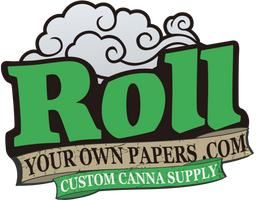
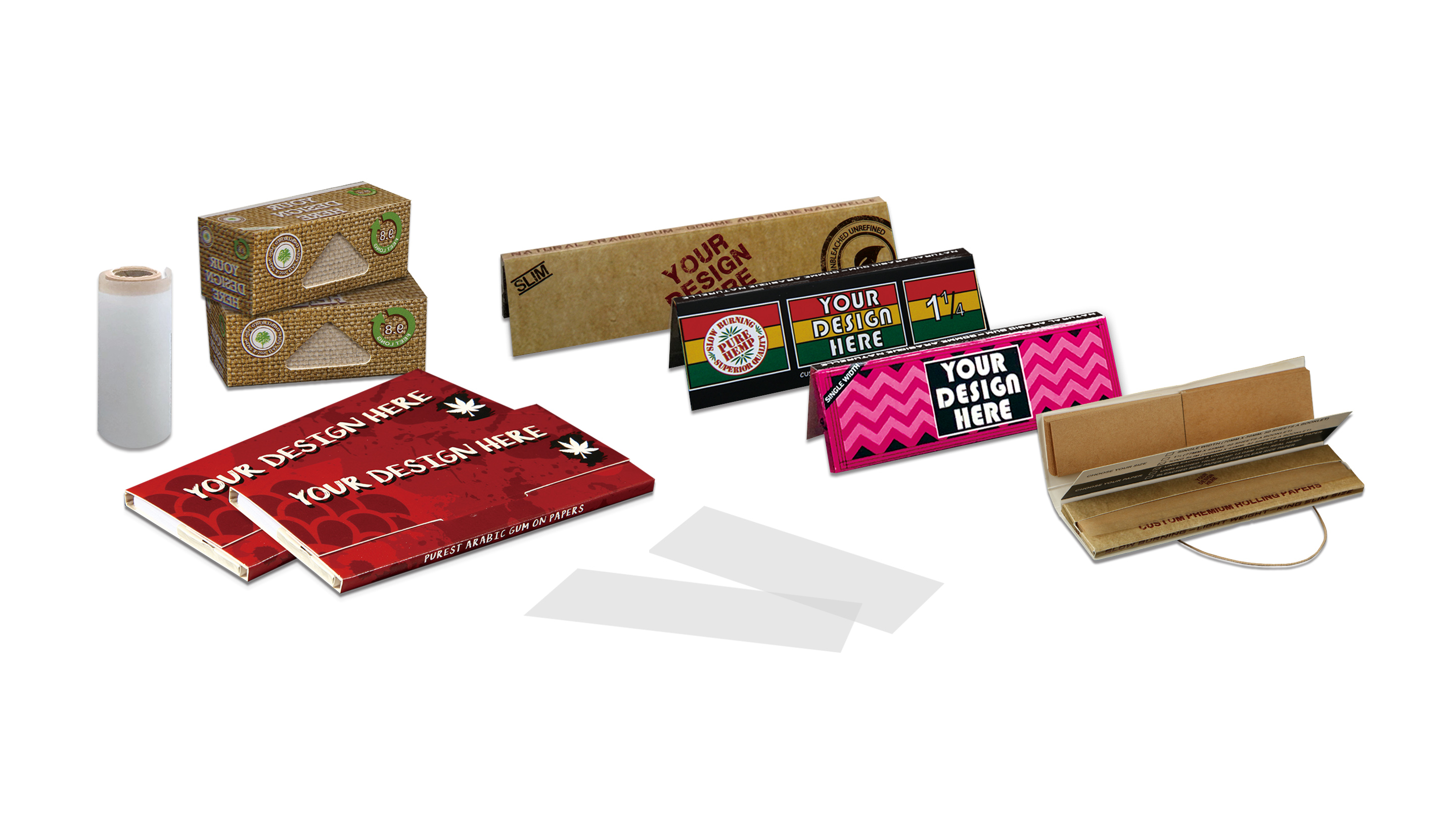

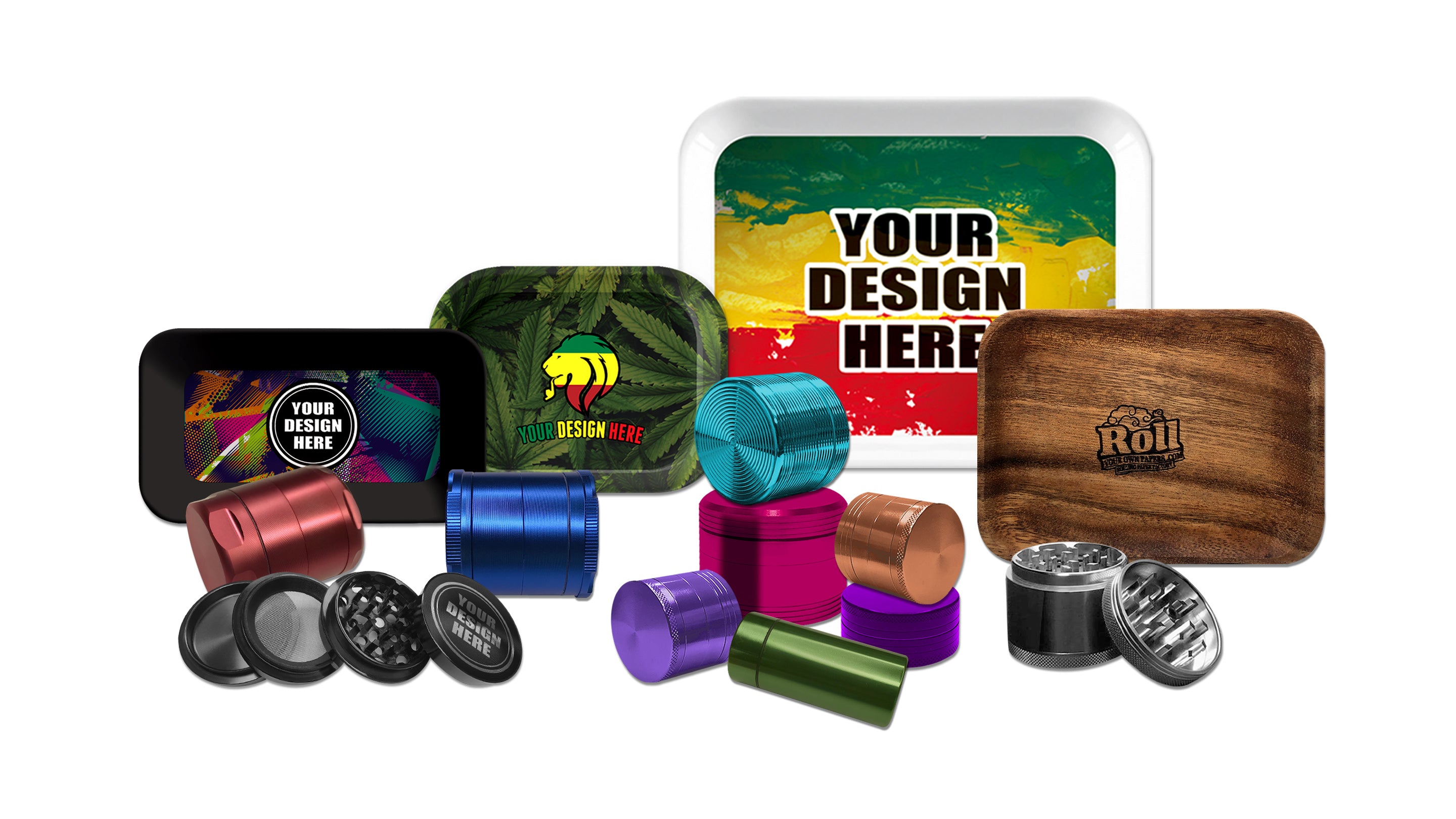
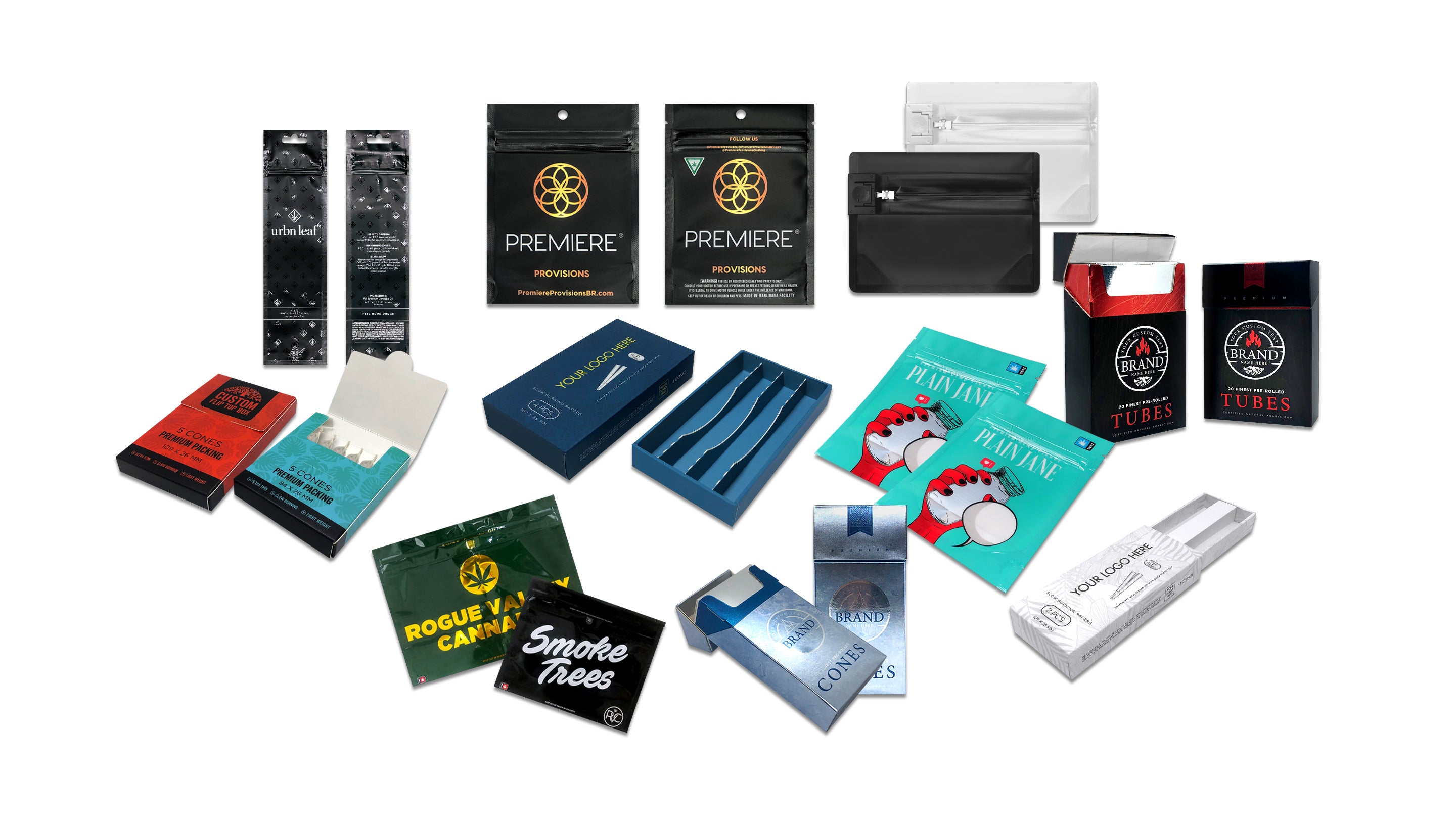
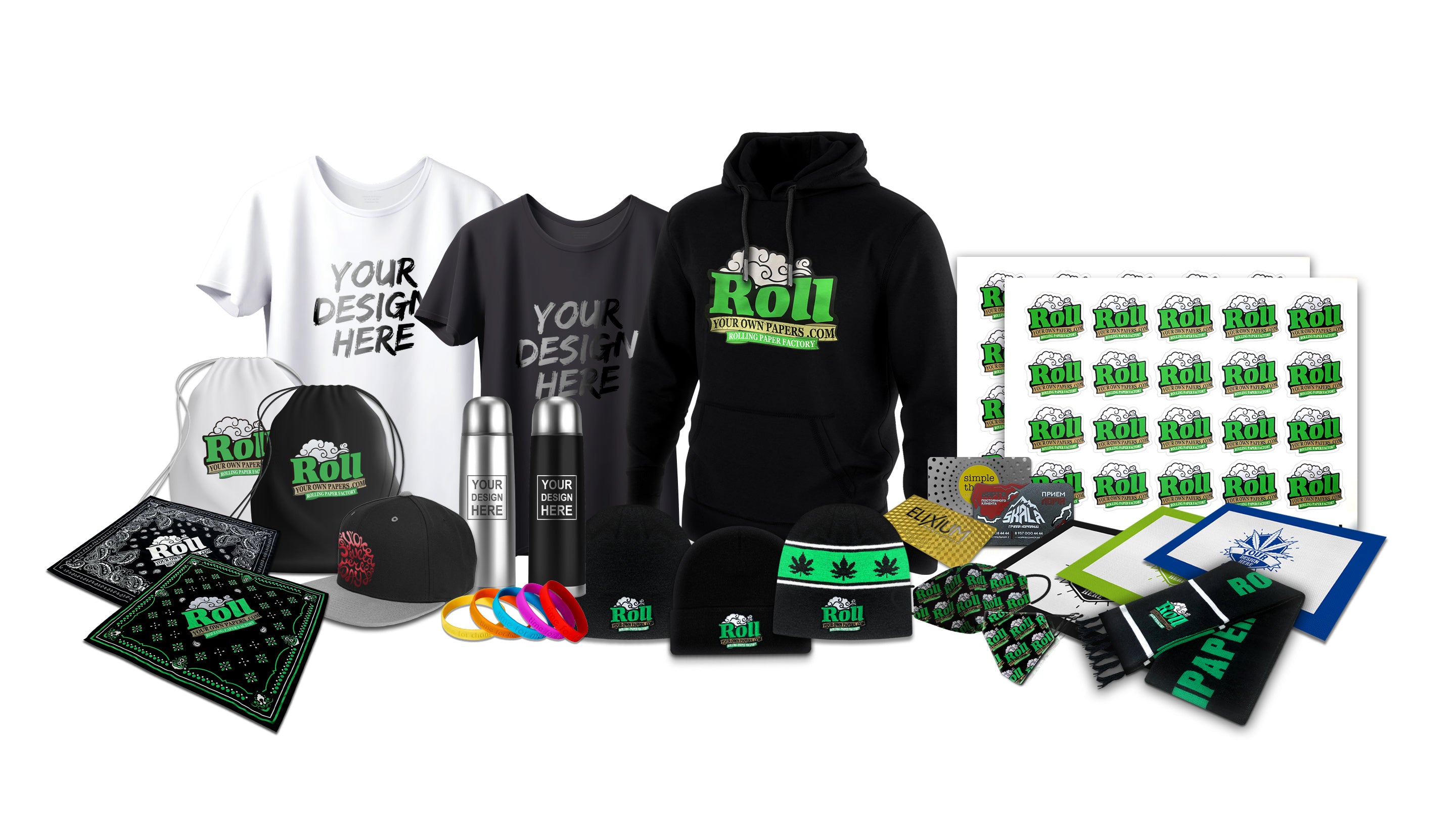
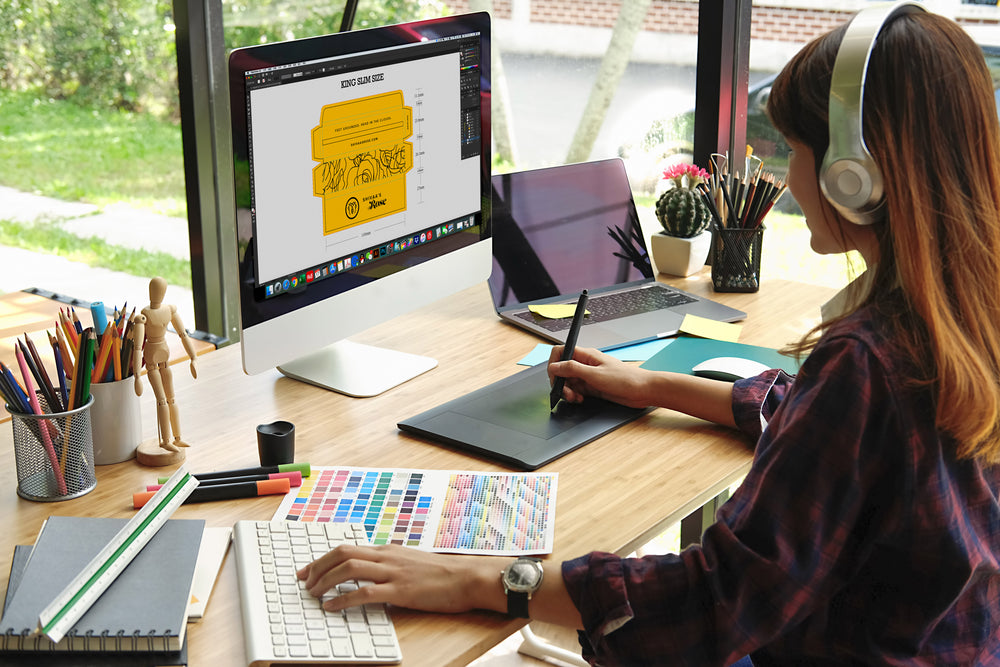



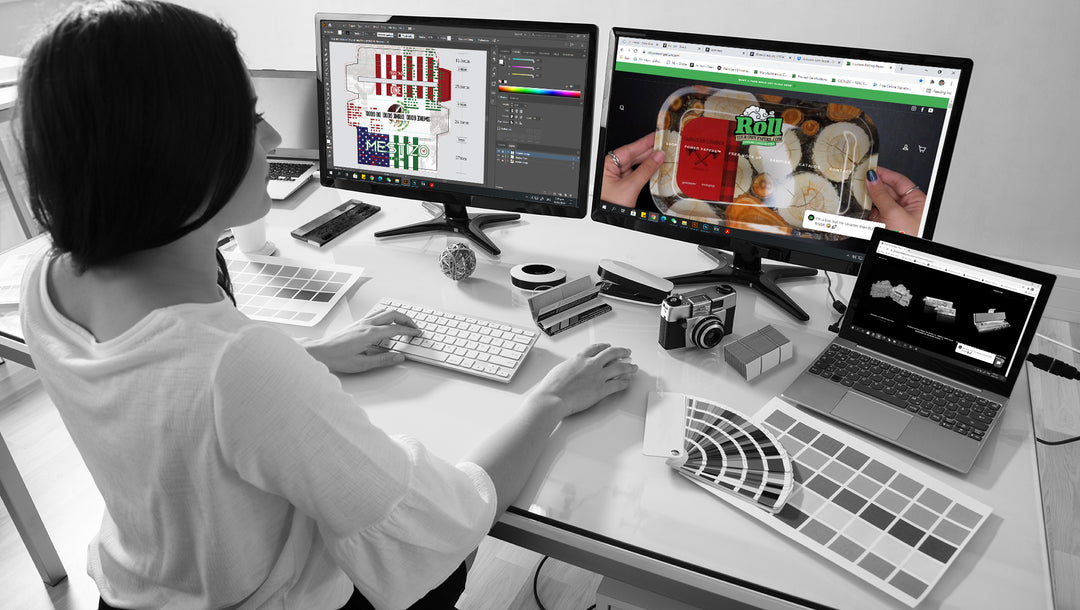
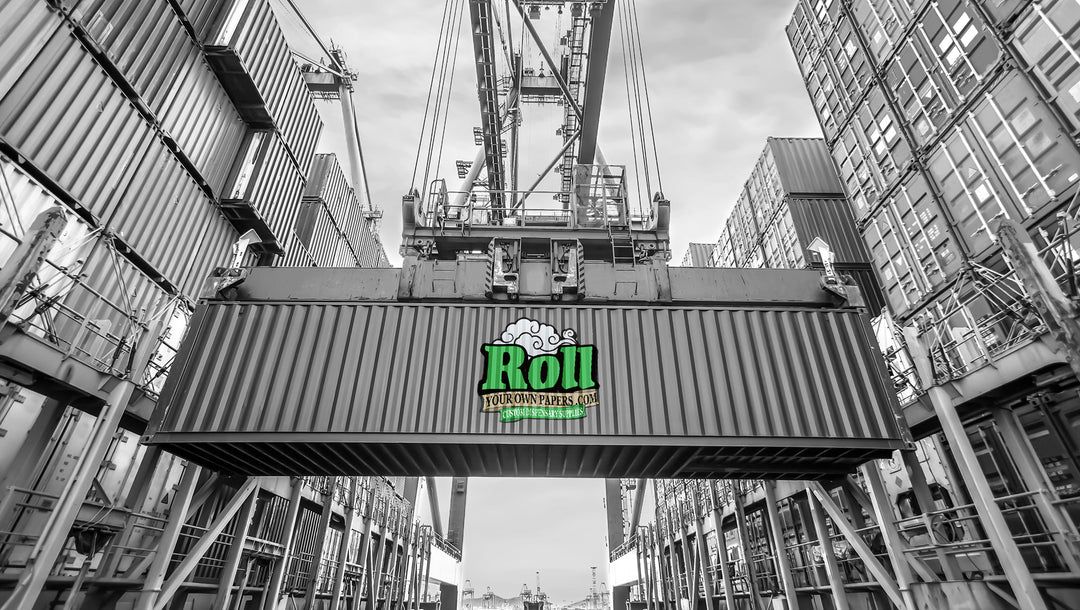

Leave a comment